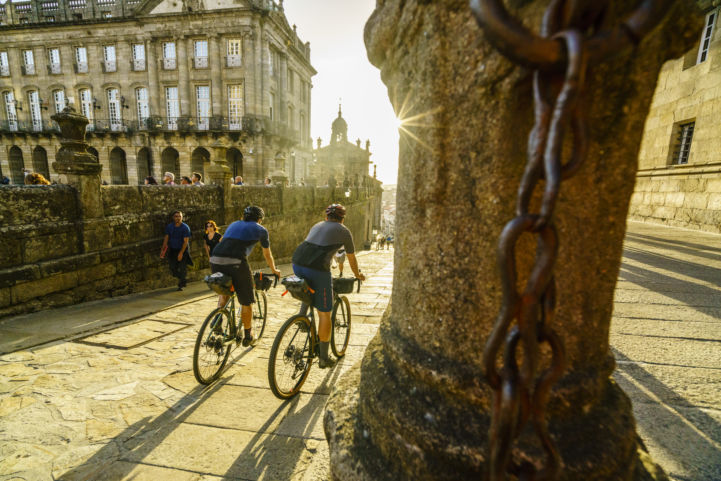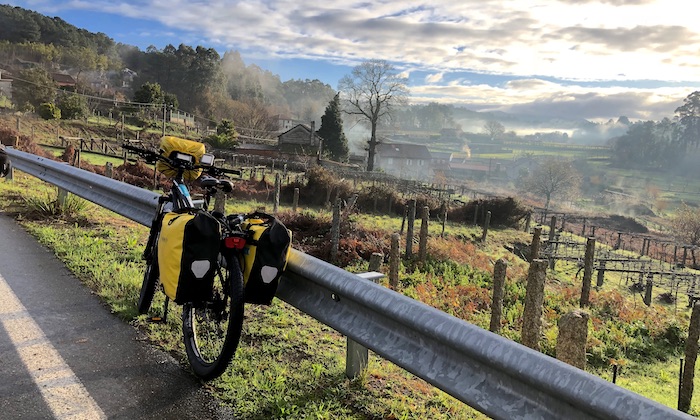We have cycled a version of the
Camino Frances on a robust tandem, running 2 inch trail tyres. We departed the walkers' trail on several sections (perhaps 40% of total distance) where it was too broken or rutted to cycle or there were too many walkers for it to be feasible. Most of the alternative, little roads were sparsely trafficked.
On a skinny wheeled touring bike, it would be best to stick mainly to the roads; they aren't busy. You can still string together the villages and towns which the Camino passes through.
Even on parts of the trail which are well surfaced, the
Camino Frances is not like most cycleways, in that walkers outnumber the cyclists many times over. Pilgrim walkers are often engaged in deep conversations or listening to music on headphones, so don't hear cyclists approach, even with bells, so a safe pace can often be only slightly above walking pace.
Be aware also that near-misses and actual collisions involving a minority of speeding mountain bikers (locals or visiting groups) with little respect for the safety of pilgrims, have somewhat tainted the reputation of all cyclists, resulting in animosity among some walkers, even towards those cyclists who *are* careful around pedestrians.
Sorry to be less encouraging. If you are patient, it is still a worthwhile journey. If you are willing to slowdown, to get off to push occasionally, to keep ringing your bell, to engage with walking pilgrims and to equip your bike with gravel tyres, there's still the opportunity for a great adventure.
There are some GPX files for roadbikes, for which I believe the latest edition of the Cicerone guide includes a link. Aternatively, there are several guides in Dutch, German and French which present well-researched road-cyclist routes.
Personally, on a touring bike, I would be tempted to cycle to Santiago along a version of the Via de la Plata (from Seville), where there is a proven road route, fewer walkers, great landscapes and a good choice of accommodation. Or, if you prefer a lot of hills, there are some wonderfully dramatic routes through the Picos de Europa, to which could still add a cross country asphalt route finishing in Santiago.
Whatever you decide, good pedalling and buen camino!



















